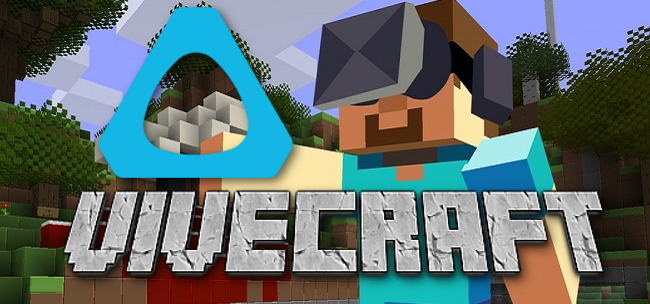Vivecraft can be used to join and play on any java Minecraft server of the same version. However, if the server has not been modified to specifically support VR, some limitations exist. See next section.
Realms servers cannot be modified.
Some servers may have anti-cheat software that blocks Vivecraft entirely (like Hypixel) or kicks Vivecraft players due to unnatural movement.
Vivecraft has a VR and a NonVR client. A Vivecraft client and a modified server are both required for VR animation support.
If you are looking for a VR-ready server to play on check out the Server Listings page.
Vivecraft limitations on vanilla servers
- VR Animations are not supported. VR Players will appear as normal players.
- Teleporting may not be allowed. Vivecraft will notify you if you turn on Teleport mode and the server has not indicated it is supported. Attempting to teleport in this case will result in ‘rubberbanding’ back to your original location.
- Arrows and Projectiles will spawn at your face, not controller. Aim accordingly. Arrow velocity may also not be as expected.
- The direction your player model looks will vary depending on activity and does not follow the HMD direction.
- Endermen aggro will use the crosshair and not the look direction.
- Creeper aggro will be normal, instead of at the reduced distance that allows roomscale fighting.
Hosting options for VR-ready servers
Setting up a Minecraft server is beyond the scope of this website, but here is a quick overview of the options available for users new to it.
- LAN Hosting
- If you are playing with multiple computers on the same network, either the VR or NonVR Vivecraft client can be used to host a VR-enabled game.
- To do this you simply load up your world and then ‘Open To LAN’ from the pause menu. The other clients should find the LAN game automatically.
- There are software solutions for creating ‘Virtual LANs’ such as Hamachi or ZeroTier. These allow remote computers to act like they’re on the same LAN.
- Self-hosting
- You can run a Minecraft server on your PC or another PC on your network. Other players would then connect to your public IP address.
- This usually requires forwarding the correct ports in your router.
- Typically you would use a Spigot server. Click the link for instructions on setting up the server, then simply add the Vivecraft Spigot Extensions plugin.
- Remote Hosting
- Many, many options exist to sign up for hosting services. The cost and options available will vary depending on the host. Almost all 3rd party hosts allow modded servers.
- Note that Mojang’s ‘Realms’ servers do not allow modification.
- Typically you would request a Spigot server. Most hosts allow uploading your own plugins to the server. Some will do it for you from known plugin repositories
Vivecraft Server Downloads
Vivecraft supports 2 common modded server platforms, Spigot and Forge.
Spigot is a server-only modding platform and is the most common choice. Spigot modifications are called plugins. Spigot derivatives, such as Paper, should also work, but the Vivecraft plugin is developed specifically for Spigot and definitely does not work on Craftbukkit.
BungeeCord is an extension of Spigot that allows hopping servers seamlessly in-game. You need to put the Vivecraft BungeeCord Extensions plugin on the proxy server in order to properly distribute VR animation data.
Forge is a very extensive client/server modding platform. Forge servers are typically used to play with a very specific set of mods that all players must use or they cannot connect. You generally would not use a Forge server just for Vivecraft.
Check the downloads page for links to the appropriate files for your Minecraft version and server type.
